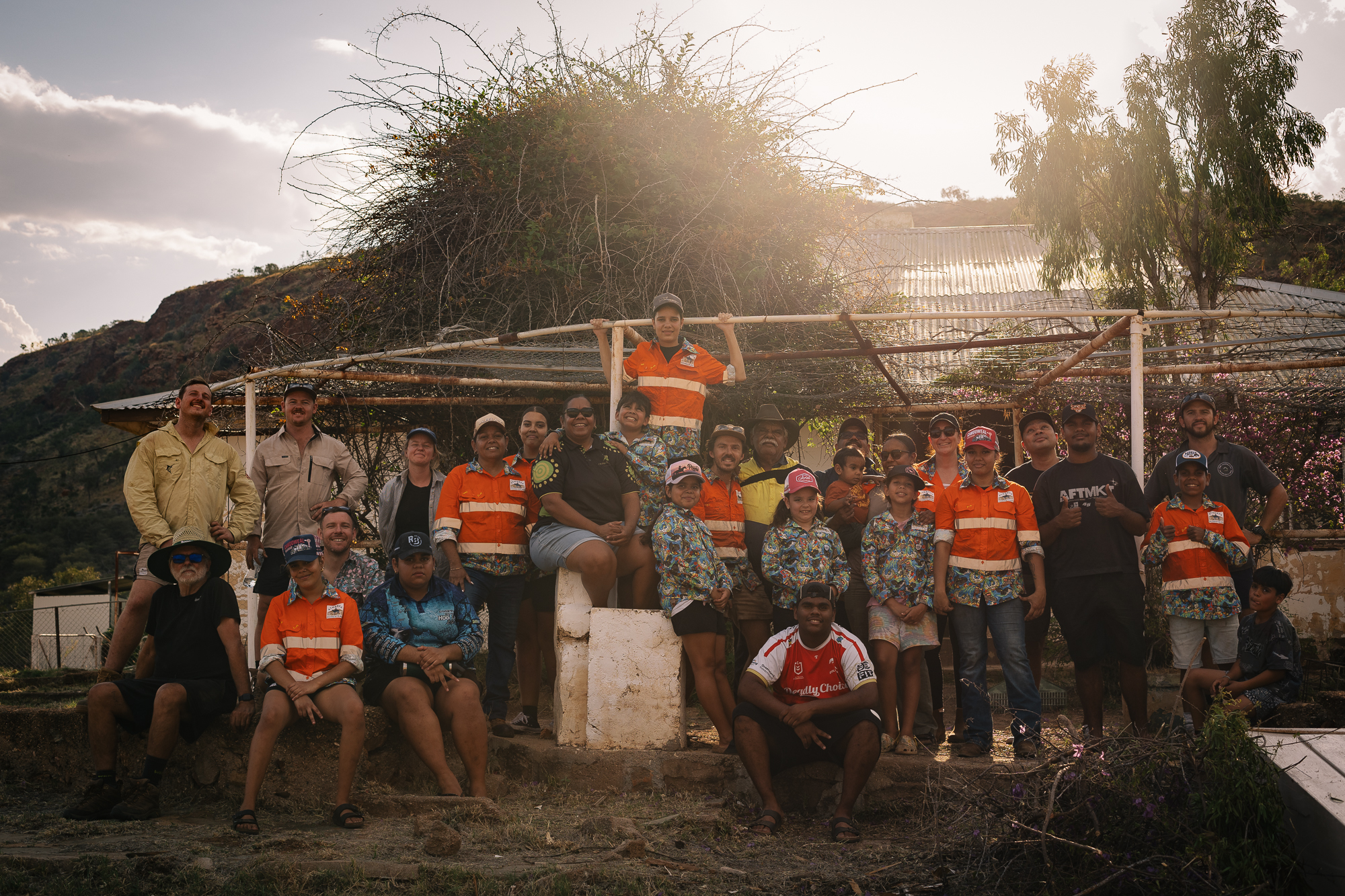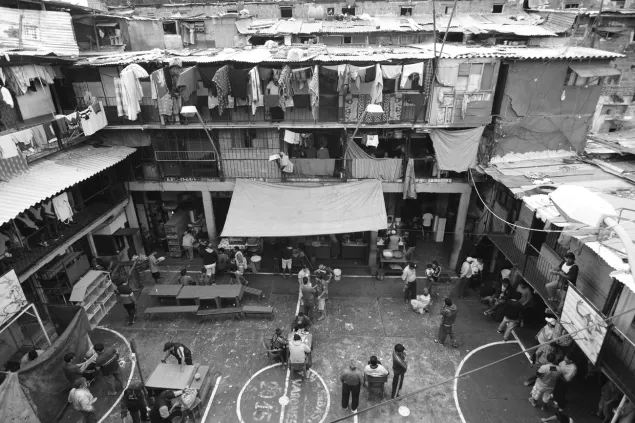Last night at ACCA (Australian Centre for Contemporary Art), surrounded by the powerful works of the Tennant Creek Brio (Tennant Creek Brio: Juparnta Ngattu Minjinypa Iconocrisis), I was struck by how art, housing, and community empowerment weave together into something far greater than their individual threads. Just days earlier, I had stood under the Story Tree on Palm Island, where Uncle Alan Palm Island shared language and story during a Welcome to Country ceremony. As young rangers tended the fire and carried out their roles under watchful eyes, I was reminded that every meaningful partnership begins with proper protocol and deep respect for place.



As Jimmy Frank Jupurrula guided us through the exhibition, his stories brought each work to vivid life. Pausing before a large-scale canvas alive with bold marks and ancestral symbols, he shared how these works speak to both the ancient songlines of his country and the contemporary challenges facing his community. Hand-painted marks, created with discarded materials and industrial paint, tell stories of connection to country that stretch back countless generations while confronting present-day realities of life in Tennant Creek.
"These aren't just paintings," Jimmy explained, gesturing to a particularly powerful piece. "They're our way of showing you how we see our country, how we live with it, how we need to build with it." His words carried the same energy that fuels his work with Wilya Janta - a deep understanding that whether through art or architecture, the goal is to help people understand the profound connections between culture, country, and community. The materiality of his work - the use of found objects, industrial materials, and bold gestural marks - mirrors the Wilya Janta project's ambition to transform existing resources into something that serves community needs while honouring cultural protocols.
As we moved through the space, Jimmy's stories wove together the temporal and the spiritual, the practical and the profound. His art, like the housing initiative he champions, carries the weight of tradition while boldly pushing into new territory. It's a powerful reminder that innovation in remote communities must be grounded in cultural understanding and proper protocols, whether we're discussing housing design or artistic practice.

What makes Wilya Janta's approach so revolutionary is how it challenges the status quo of remote housing. As Dr. Simon Quilty puts it, "no medicines are going to fix this problem" - the issue isn't just about building structures, it's about addressing systemic inequalities. This truth was reinforced during my visit to Palm Island's local store, where a simple bed frame and mattress cost nearly $1,000, with quality and durability issues compounded by the logistics of island life. These aren't just housing or furniture challenges - they're symptoms of deeper systemic issues that require community-led solutions.
Standing in ACCA last night, watching the Tennant Creek Brio's "audaciously punk attitude" challenge conventional art world norms, I couldn't help but think of Uncle Alan Palm Island proudly showing us his hospital mural and the traditional canoe in the council boardroom - tangible symbols of connection, resilience, and the long history of cultural exchange. Like the Brio's art and Wilya Janta's housing vision, these artefacts speak to both ancient wisdom and future possibilities.
Wilya Janta's pilot project embodies this understanding. Their approach isn't just about building houses - it's about building a new model of community empowerment. Every aspect, from the initial design concepts to ongoing maintenance, is guided by community input and cultural protocols. The incorporation of features like communal living spaces and outdoor kitchens reflects a deep understanding of how homes need to support cultural practices and family life.


The name "Wilya Janta" itself - "standing strong" or "standing together" in Warumungu language - captures the essence of this approach. It's about collective strength, about communities having the agency to shape their own solutions. The organisation's constitution, grounded in the story of Julawarra and Gilygi, demonstrates their commitment to honouring protocols while building bridges between Indigenous and non-Indigenous ways of working.
What I witnessed at ACCA wasn't just an art exhibition or a fundraiser - it was a testament to what's possible when we truly support community-led change. Like watching the young rangers on Palm Island step confidently into teaching roles while sharing their knowledge of country, it demonstrated the power of enabling communities to write their own stories of regeneration and growth.
Just as Uncle Alan Palm Island's mural at the Palm Island hospital depicts the ancient stories of sea country and trade routes - showing how his Elders' canoes navigated waters for thousands of years - the Wilya Janta pilot project charts a new course forward while honouring old ways. As the project advances, supported by philanthropic donations and potential government partnerships, it carries the potential to transform not just housing in Tennant Creek, but our entire approach to working with remote communities. In the council boardroom on Palm Island, Uncle Alan showed us the traditional canoe that his ancestors used for trade and connection - a physical reminder that innovation and tradition have always worked hand in hand in Aboriginal communities. Like that canoe, Wilya Janta's work is about creating vessels that carry both practical purpose and cultural meaning - spaces where cultural intelligence leads, where traditional knowledge guides innovation, and where every step forward strengthens the relationships that make lasting change possible. The stories in Uncle Alan's hospital mural and the traditional canoe in the boardroom remind us that the solutions we seek have deep roots in Aboriginal wisdom and ways of doing - we just need to listen, learn, and follow proper protocols in bringing them into the present.


This is the revolution that Wilya Janta are leading - one that challenges us to think differently about how we create change in remote Australia. Like the morning ceremony at Palm Island's Story Tree, it reminds us that true transformation moves at the speed of ceremony, not commerce. It's not about imposing solutions from outside, but about standing together to create change that honours both tradition and innovation, that respects protocol while pushing boundaries, that builds houses while building community power.




.svg)